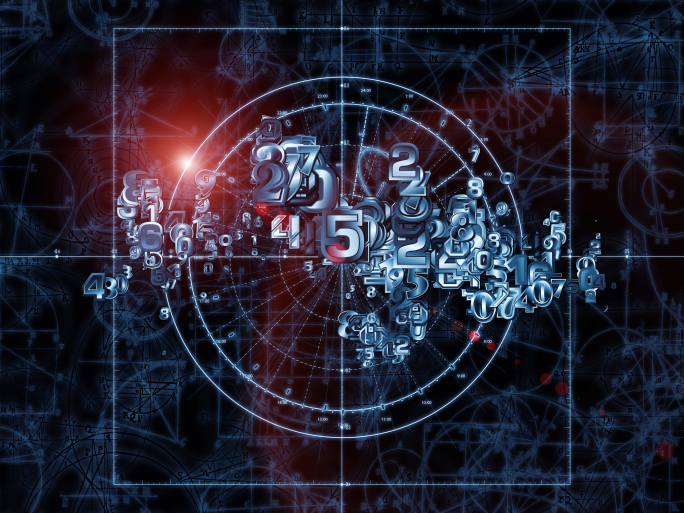Machine learning is one of those advances that are revolutionizing our lives almost without knowing it. Sectors such as health, robotics, financial technology and Big Data are experiencing a 180-degree turn thanks to models that are able to predict the future and learn from their own predictions. It is the early stage of what we all know as Artificial Intelligence.
Medical diagnostics
What made the fictional character of Dr House such an amazing physician? Any clinical diagnosis requires training, experience, pattern recognition and calculation of probabilities. Doctors who meet all these conditions and achieve creative solutions to solve problems are those who inspire TV series like this one. But, can an algorithm help a healthcare worker in his work? The answer is yes.
There are several interesting precedents: in 1961 Dr Homer Warner successfully developed an automatic diagnosis system for patients with congenital heart disease, and in the 1970s Edward Shortliffe, of Stanford University, created the MYCIN, a system for the diagnosis of infectious diseases of the blood. Since the 1980s different programs have been introduced to help physicians make decisions, most of them based on artificial intelligence and machine learning (artificial neural networks, case-based reasoning and Bayesian classifiers).
A case of successful implementation of these machine learning models to the diagnosis of diseases is the IMED project for the detection of breast cancer. The project has a platform with a huge repository of medical images of anonymous cases of breast cancer; an application called Mammography Image Workstation for Analysis and Diagnosis (MIWAD), which allows to store, retrieve and manipulate that information (it works with an image viewer of breast cancer cases); and then a group of automatic classifiers, based on machine learning algorithms, that allow to develop alternative diagnoses to those made by a physician and serve as a comparison mechanism with the first report. This project was selected in 2013 as a case of success in R&D.
Search engines and predictive analysis services on the cloud
Large technology companies such as Google, Microsoft and Facebook are using machine learning to improve their search and recommendation systems for users or their cloud computing services for professionals.
For some time now, search engines have the ability to offer search options to users when they start to make a request. This is achieved through machine learning techniques, and specifically with what the tech industry calls deep learning. This type of approach allows large search engines to improve their ability to recognize voices, images and texts in a more precise way.
Other corporations like Microsoft use machine learning to provide businesses predictive analysis solutions, with cloud services such as Microsoft Azure Machine Learning. Thanks to them, the company’s customers can design applications to predict what will happen in their business in the future… and all that without a strong investment in engineers and software.
Robotics learning
Machine learning is commonly used in robotics, giving rise to what is known as robotic learning. This discipline is responsible for studying techniques that allow robots to adapt to the environment at high speed and in a creative way. And that is only possible through machine learning algorithms. This allows machines to acquire sensory and motor skills (so a humanoid robot can be capable of moving through a rough terrain), language (recognize human language) and interactive capabilities (grab objects).
Scientists and experts in robotics and machine learning have been working for some time with the possibilities offered by supervised learning and self-learning in the field of intelligent machines. Supervised learning techniques are used, for example, to identify vegetation and obstacles in the field by a robot. The self-learning supervised techniques aim to make robots capable of generating training examples that end with an improvement in their adaptation to the environment.
Fight against fraud
Machine learning is also used for the development of predictive models for fraud detection in large corporations, and specifically for crimes related to credit card transactions with financial institutions. For example, if a bank has a database of successful transactions and another one with illicit operations, machine learning techniques can generate a model that is able to detect (with a certain margin of error) if certain operations are fraudulent or not.
The methods used for this type of anti-fraud practices include, for example, neural networks, decision trees and Bayesian analysis.
The key to this whole process is that neural networks are able to learn over time: the detection of any fraudulent transaction improves the model and increases the probability of detecting new crimes committed with credit cards. So much so, that a financial institution could have data of any illicit transaction shortly after it is committed. Yes, we are talking about a sort of economic crimes Big Brother.
For instance, the Signal Processing Group of the Institute of Telecommunications and Multimedia Applications of the Universitat Politècnica de València has been working on the development of a machine learning algorithm for detecting credit card fraud.
Analysis of stock market
The old stock market management systems used to follow certain indicators as guidelines for their buying and selling decisions. Today, the use of models allows to analyze large amounts of information to develop patterns and make decisions when the possibility of closing a major operation is high.
To create these predictive models it is necessary to use historical data of various indicators, establish which values of these indicators are most likely to end in a good operation, and study a possible pattern. A simple way to implement automatic learning to trading is through tools like RapidMiner or Matlab.
Data mining
Data is the new great asset of enterprises. But data by itself doesn’t generate added value. It is necessary to extract useful information from it, or what in Big Data is called Knowledge Discovery in Databases (KDD). All this qualitative analysis of the information has long ceased to be a manual process due to the extremely high volume of the data: today it is impossible to correct errors and duplications or to look for patterns without the assistance of machine learning algorithms.
Data mining is responsible for finding patterns or unknown relationships/sequences of data to draw interesting conclusions (find the best customers and increase sales, for example). To do so, it uses machine learning algorithms (usually artificial neural networks).
It is the application of artificial intelligence for the extraction of knowledge in several well-defined phases: we must first define the problem and prepare the data, and then we have to review and understand its dimension, generate the models, and finally implement these models to the sample of information to gain insights. The model is applied once it is validated, using a sample of training data, which is useful for extracting information.
Management of data centers
One of the key issues in large data centers is the use of energy. Thanks to the machine learning algorithms, a data center is able to learn from its own performance and correct any variable to improve its management – a truly smart data center.
Google has powerful machine learning algorithms that allow to track, predict and learn about the efficient use of energy needed by a particular server group according to the demand for information. For example, these algorithms allow to know in advance the level of cooling required by a facility in order to adjust the performance to what is expected and within the estimated cost.










